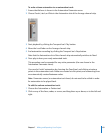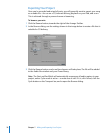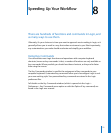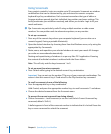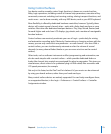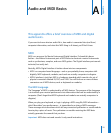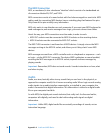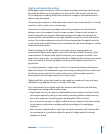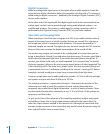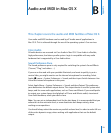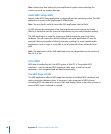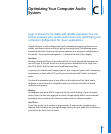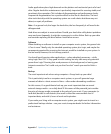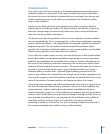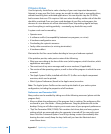
Appendix A Audio and MIDI Basics 77
Digital and Analog Recording
While digital audio recording is similar in concept to analog recordings made on tape,
the technical differences are significant. For much of the 20th century, and into the
21st, analog tape recordings have been used for the storage of audio performances—
spoken, sung, and played.
The analog tape medium is a thin plastic strip coated in tiny metal particles. It is usually
stored on a roll or spool, or as a cassette tape.
The process of analog tape recording involves the transmission of small electrical
charges, sent to the magnetic heads of a tape recorder. Changes to the strength of
these charges alter the magnetic fields generated by the heads, and rearrange the
positions of the metal particles on the tape. Needless to say, this is a less than precise
science. Due to the randomness involved in the rearrangement of magnetic particles
on tape (and other technical reasons), the recordings are said to be analogous—similar
to the actual performance.
Digital recording, on the other hand, is much less random. Analog signals are
converted into digital audio signals via the ADC (Analog to Digital Converter) of the
audio interface. The digital audio signal is stored on your computer hard disk—as a
series of ones and zeroes—in a digital audio file. Provided this file remains uncorrupted
(and is not edited or altered), the digital recording will be identical each time it is
played back.
In a copying situation—tape to tape—there is no comparison between analog and
digital recordings. Each subsequent copy of an analog recording becomes noisier, and
less like the source material. This is the random factor of the magnetic particles
becoming less like the original each time a copy is made.
Digital audio files, on the other hand, can be copied any number of times, with each
subsequent copy adding no noise. It is simply a file copy.
On a more practical level, digital audio files stored on hard disk have the following
advantages over analog audio stored on tape.
 Digital audio can be cut, copied, and pasted freely from location to location. Could
you imagine physically cutting a stereo analog recording stored on tape into even
four or five segments, and splicing them back together? Not much fun!
 You can move to any spot in a digital audio file almost instantly, rather than waiting
for the tedious mechanical rewinding and fast forwarding of an analog tape
machine.
 You can process digital audio in ways that are simply impossible with analog audio.
As one example, it is possible to adjust the pitch of a digital audio file without
changing its speed.



